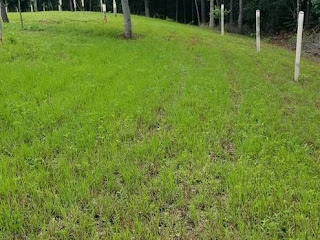Today’s Erosion and Sediment Control Tip: #19
There has always been and probably always will be some confusion regarding the use of cereal rye or annual ryegrass seed for erosion control. To make the matter more confusing, the industry can often use the same term “rye” to describe either plant.
At proper rates and management, each could be used as temporary cover during the winter months. We caution against the use of ryegrass as a nurse crop and prefer cereal rye basically because ryegrass is too competitive.
Here are the Pros and Cons of Ryegrass when used in the Fall:
|
Pros |
Cons |
|
Establishes quick and provides almost “instant” green. |
Competes for water and nutrients from permanent plants. |
|
Prevents splash and sheet erosion during the cooler months. |
The large quantity of plant matter can choke out the
preferred vegetation. |
|
Generally disease resistant. |
Dies in the spring, so it is not a permanent solution for
a vegetated area. |
|
Outcompetes weeds. |
If allowed to produce seed, the seed can seriously
interfere with subsequent efforts to establish permanent cover. |
I have personally used ryegrass as cover throughout the fall
and winter and established a bahia/bermuda cover by seeding in the spring, but
it took work on my part (see picture). The ryegrass had to be mowed
throughout the winter months to make sure that it provided cover but did not
create excessive thatch. Most construction sites are not going to get
this degree of management; therefore, we always prefer cereal rye for the job.
Perry L. Oakes, PE
Erosion & Sediment Control Program Coordinator
Alabama Soil and Water Conservation Committee




Comments